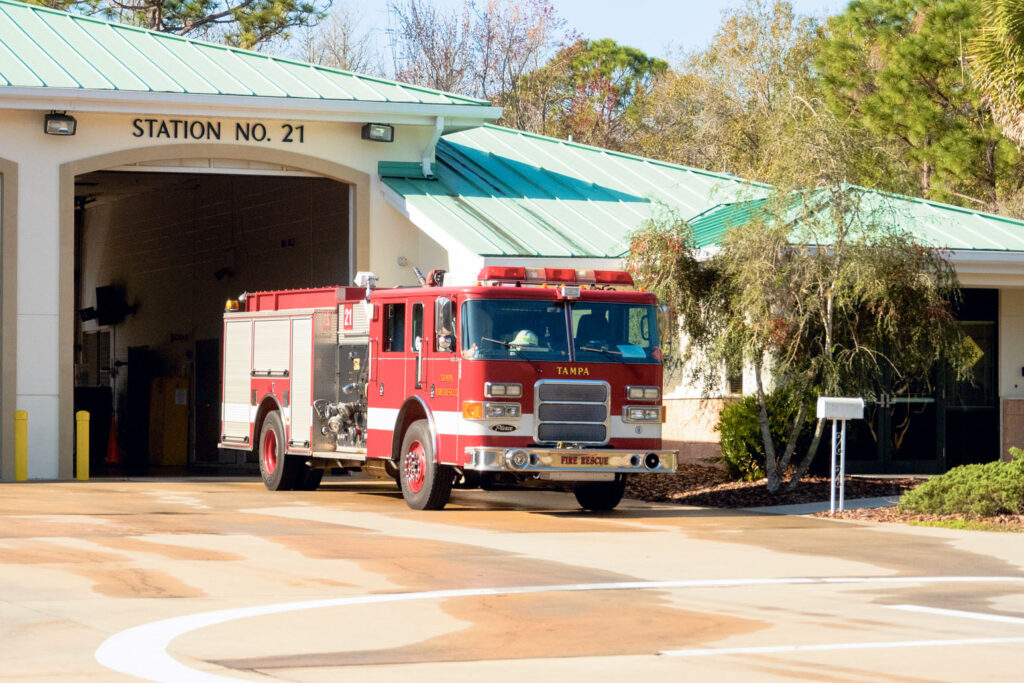

The days of outdated equipment and using an iPad or cell phone to locate a fire or other emergency are coming to an end, interim Tampa Fire Chief Barbara Tripp told the Tampa City Council at its Jan. 14 meeting.
Tripp outlined a plan to address many of the concerns raised by the Council members in November about fire fighters at many stations, especially Station 13 in North Tampa, being overwhelmed by the combination of calls and lack of proper technology and personnel to deal with them. The plan also includes more fire stations, including one in New Tampa’s K-Bar Ranch area, which will have nearly 2,000 homes when it is built out.
That is more long range, however, as Tripp focused on easing the pressure at Station 13. Located at 2713 E. Annie St. near Busch Gardens, Station 13 handled more than 11,000 calls last year, which accounted for 1/7th of all calls made to Tampa’s 23 fire rescue stations.
Council member Luis Viera, who represents New Tampa as part of his District 7 duties, called the situation “an abomination.”
Viera said he was glad to see Tripp tackling the problems as part one of a two-part solution to help make Tampa Fire Rescue (TFR) more efficient. He said part two will come in March, when the issue of slow response times and how to shorten them will be addressed at a workshop.
A report by the International Association of Fire Fighters (IAFF) caused a number of red flags to be raised, and one of the ones that caught Viera’s attention was how fire service in New Tampa was faring.
According to the report, four of the six TFR stations with the slowest response times are located in the 33647 zip code, despite having four stations located within a few miles of each other — Station No. 20 (located on Bruce D. Downs Blvd. in Tampa Palms); Nos. 21 and 22 located off Cross Creek Blvd.; and No. 23, which opened in 2019 on Trout Creek Ln. south of County Line Rd.
“In March, we have to start looking at long-term solutions,” Viera says. “You talk to stations 20, 21, 22 and 23, and they tell me sometimes you have wait times of 15 minutes out there.”
Much of the problem seems to center around outdated technology, according to Joe Greco, Tampa Firefighters Local 754 president. In fact, Greco says, the response times are probably not as bad as the IAFF report stated, “but there’s no way to be accurate, to give you that information, because our system is antiquated and inaccurate.”
Tripp said TFR has been using the same Computer Aided Dispatch system since 1998, and its Automated Vehicle Locator (AVL) has been out of service the past five years. Old GPS equipment was being used that depended upon antennas going back 5-10 years ago.
New systems, at a cost of $1.2 million over five years, have been purchased and should be implemented by October, provided there are no setbacks due to Covid-19. The new equipment definitely should help shorten response times in New Tampa.
“Although we all regret that the equipment funding didn’t come when we wanted it to, it is in process,” said Russell Haupert, the city’s director and chief information officer for technology and innovation. “It is on the way and we are doing everything we can to accelerate that process so we don’t have any problems out in the field from this point forward.”
While Orlando Gudes, the City Council member for District 5 and a police officer for 36 years, favors a fire rescue overhaul, he was aghast, as were other Council members, that the situation had reached this point.
“How has TFR not had computers (in its trucks)?,” Gudes asked. “That makes no sense to me.”
Making less sense, though, was the fact that all 23 stations currently still have to compete for radio time with dispatch on just one channel, Gudes added. But, the hope is that the new AVL will help rectify that.
“Five years of not having any computer-aided dispatch other than your initial tear off from the station is absolutely ridiculous in a city the size of Tampa,” Greco said.
Viera hopes TFR can be improved as part of a larger plan to tackle public safety in Tampa. The issue is where the money needs to come from to pay for the improvements. “This requires our attention,” Viera said. “We’ll need to look at the budget. Are we going to have the political leadership in the city to pay for it? I say hell yes we are. I know we are.”
The post New Tech Should Speed Up Emergency Response Times appeared first on Neighborhood News.

Customer Reviews
Thanks for submitting your comment!